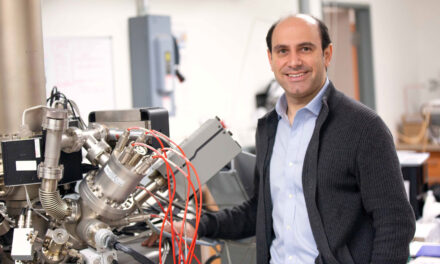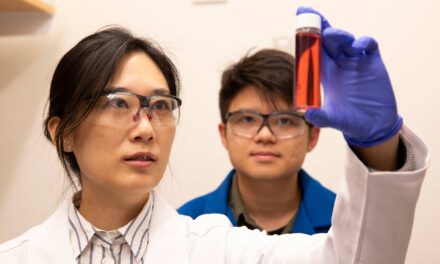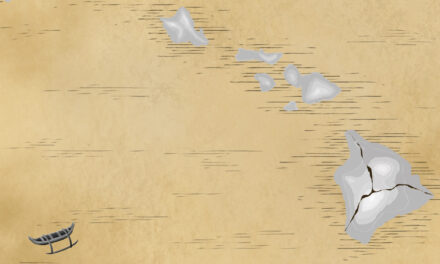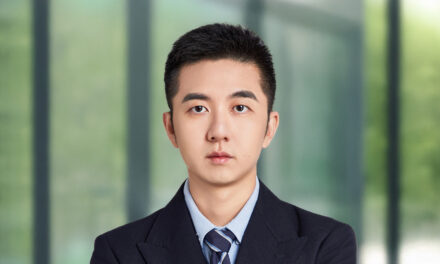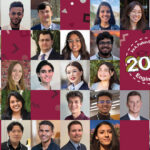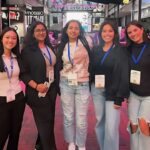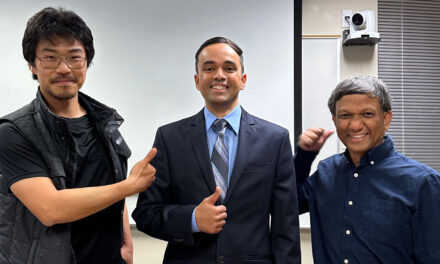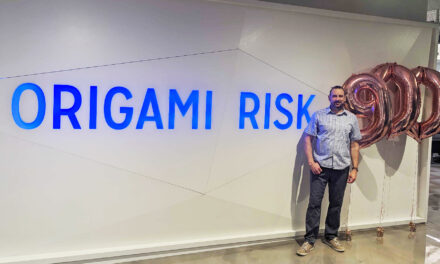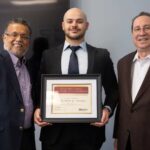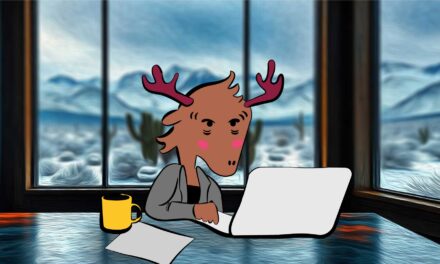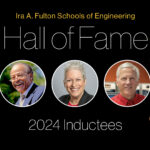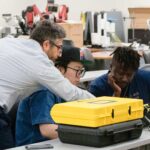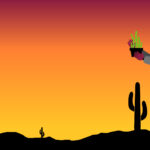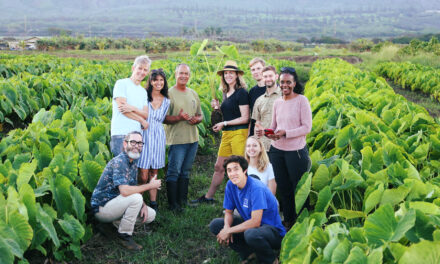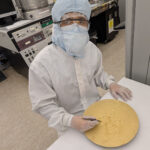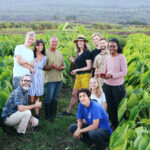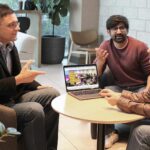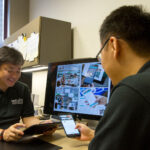
Teenagers take on human-centered engineering technology challenge
Fulton Schools EPICS High participants join with community group to give young students opportunity to aid children with disabilities

Above: The assistant dean of engineering education for the Ira A. Fulton Schools of Engineering at Arizona State University, Tooker Professor Tirupalavanam Ganesh (at left), poses with the overall winning team at the recent MAKERS of Change Assistive Technology Challenge. The event was a collaboration between the Southwest Human Development organization and the Fulton Schools Engineering Projects in Community Service program for high school students. Photo courtesy of Southwest Community Development
Success in today’s more challenging engineering endeavors can require mastering the use of an increasingly expansive array of high-tech tools and advanced skill sets. Today’s engineering educators, however, are looking beyond meeting those strictly technical demands for defining the benchmarks for ideal outcomes and optimal problem-solving results.
Instead, they advocate for the adoption of additional priorities in the engineering professions. Those include consideration of things not traditionally emphasized or even mentioned in textbooks: a commitment to social responsibility, a sense of community, and even compassion and empathy, as guiding principles.
Such lofty aspirations are an integral part of the framework of Engineering Projects in Community Service, or EPICS, in the Ira A. Fulton Schools of Engineering at Arizona State University. The program is based on a communal ethos that has driven the emergence of a new concept often described as human-centered engineering.
Based on a concept founded at Purdue University more than 25 years ago, ASU’s undergraduate program has given thousands of students hands-on learning experiences in social entrepreneurship. They design, build and deploy systems to help charities, not-for-profit organizations and schools further their missions through solving engineering-based problems.
For more than a decade, ASU has been part of a national EPICS consortium that includes dozens of leading universities.
The Fulton Schools is also among those educational institutions that have expanded their EPICS program to bring these experiences to younger students. Over the past decade, the EPICS High program has introduced thousands of Arizona high school students to how engineering education can be put into action in ways that help their local communities.
This semester, the program reached an especially impactful high point in those efforts with its annual EPICS High Olympiad Challenge through a collaboration with the Southwest Human Development organization’s fourth annual MAKERS of Change Assistive Technology Challenge. The event aids the organization’s work to develop and provide technologies and services for young children with disabilities.
The EPICS High students made up 50 of 69 teams from 12 high schools in the greater Phoenix area — more than 400 students in all, counting the other MAKERS challenge teams members — who were tasked with designing ways to help Gabby, a local 4-year-old girl with Down syndrome.
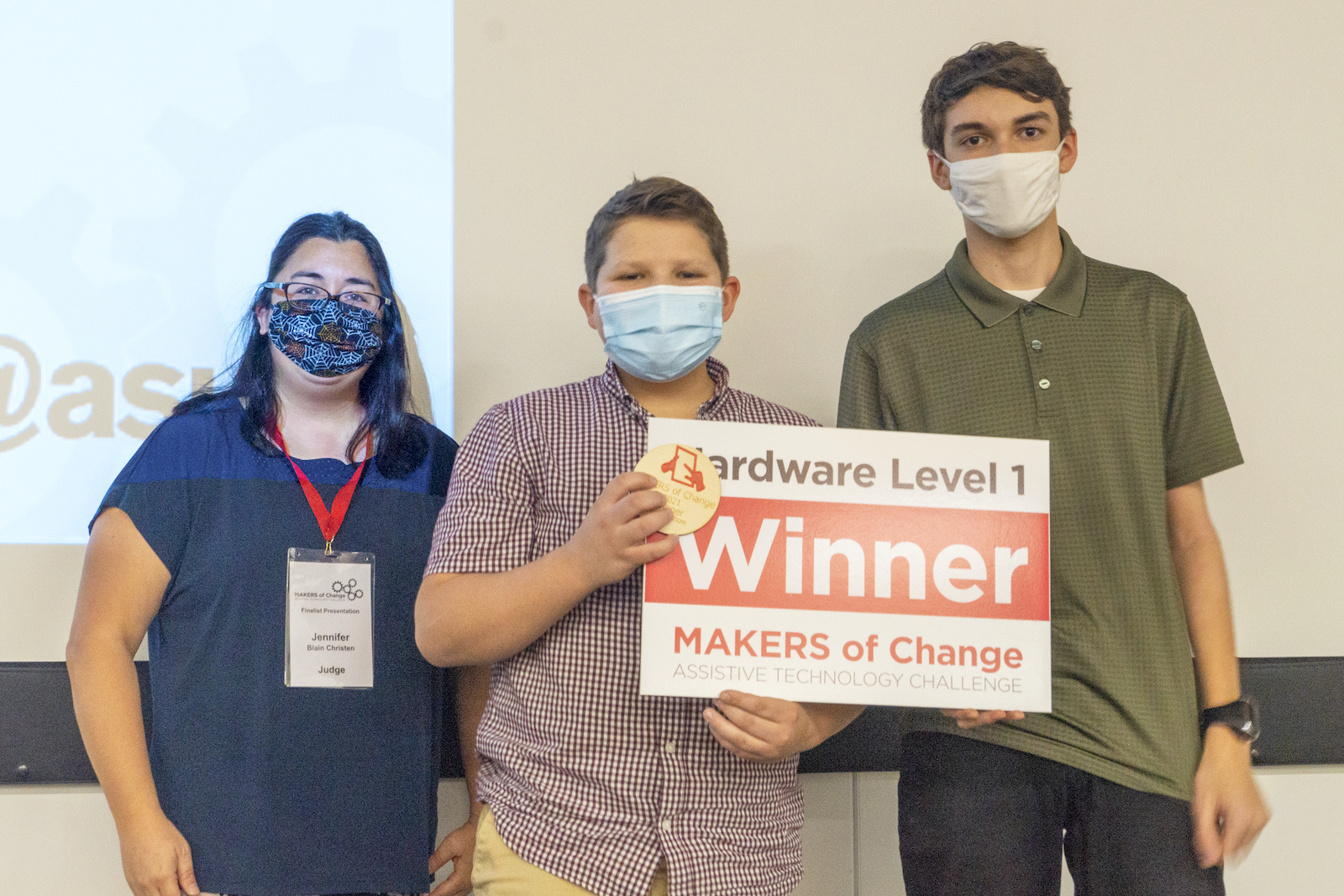
Jennifer Blain Christen (at left), a Fulton Schools associate professor of electrical engineering, with two students who won a top MAKERS challenge prize for developing a hardware technology solution to aid a youngster with Down syndrome. Photo courtesy of Southwest Human Development
“This was perfect for presenting our students with a real-world scenario and challenging them to come up with solutions with her very real needs in mind,” says Jennifer Velez, a senior program coordinator for the Fulton Schools Outreach and Recruitment team.
“They learned things from this experience that they can use to develop their own individual EPICS projects to serve their own communities,” Velez says.
The students were assigned to come up with either a hardware or software tech solution to help Gabby communicate, and with ways for her parents to customize that solution for their own needs.
Much of what the students designed and prototyped was impressive, says David Reno, Southwest Human Development’s senior manager of development and donor sponsorships.
“We saw these teenagers get motivated by the idea of helping a real person, and now I think they start to realize they can learn skills that would give them the ability to improve lives for people in their own communities,” Reno says.
Some of the teams of about four to six students each came from Red Mountain High School in Mesa, where engineering teacher Adam Middleton, the school’s EPICS High instructor, says he encourages students to step out of their comfort zones and pursue project goals that push them beyond an understanding of engineering on a merely theoretical level.
The MAKERS of Change event “was a great opportunity to open their eyes to the possibilities of what they could learn to do,” Middleton says. “They got super engaged and invested, even passionate about where they might be able to go with this in the future.”
Middleton and Velez say they are confident many of the teenagers came away with clear insights into the basics of human-centered engineering and with a fundamental grasp of some specific fields such as biomedical engineering.
Middleton says he watched students do “some good detective work” to deepen their understanding of Gabby’s condition and challenges, and then saw students “formulating ideas for prototypes of mechanical systems” designed to fulfill her needs.
“I love that ASU has the EPICS program funding source available to help our kids. They’re getting access to real mentors and real engineering design processes,” he says, “and being given the opportunity to stage presentations to actually showcase their work.”
Reno says he’s ready to propose a continuing collaboration between Southwest Human Development and the Fulton Schools EPICS High program for next year.
“I was very impressed by the heart they show for their mission of adapting strategies for big industrial-scale engineering projects to instead explore creative applications that help people overcome their very specific individual challenges to leading productive lives,” Reno says.
“They have the ability to craft a high-quality engineering challenge event,” he adds. “They showed their expertise in communicating with teachers and guiding students and recruiting experienced judges for the students’ projects. They really enabled us to take the MAKERS challenge to a whole new level.”
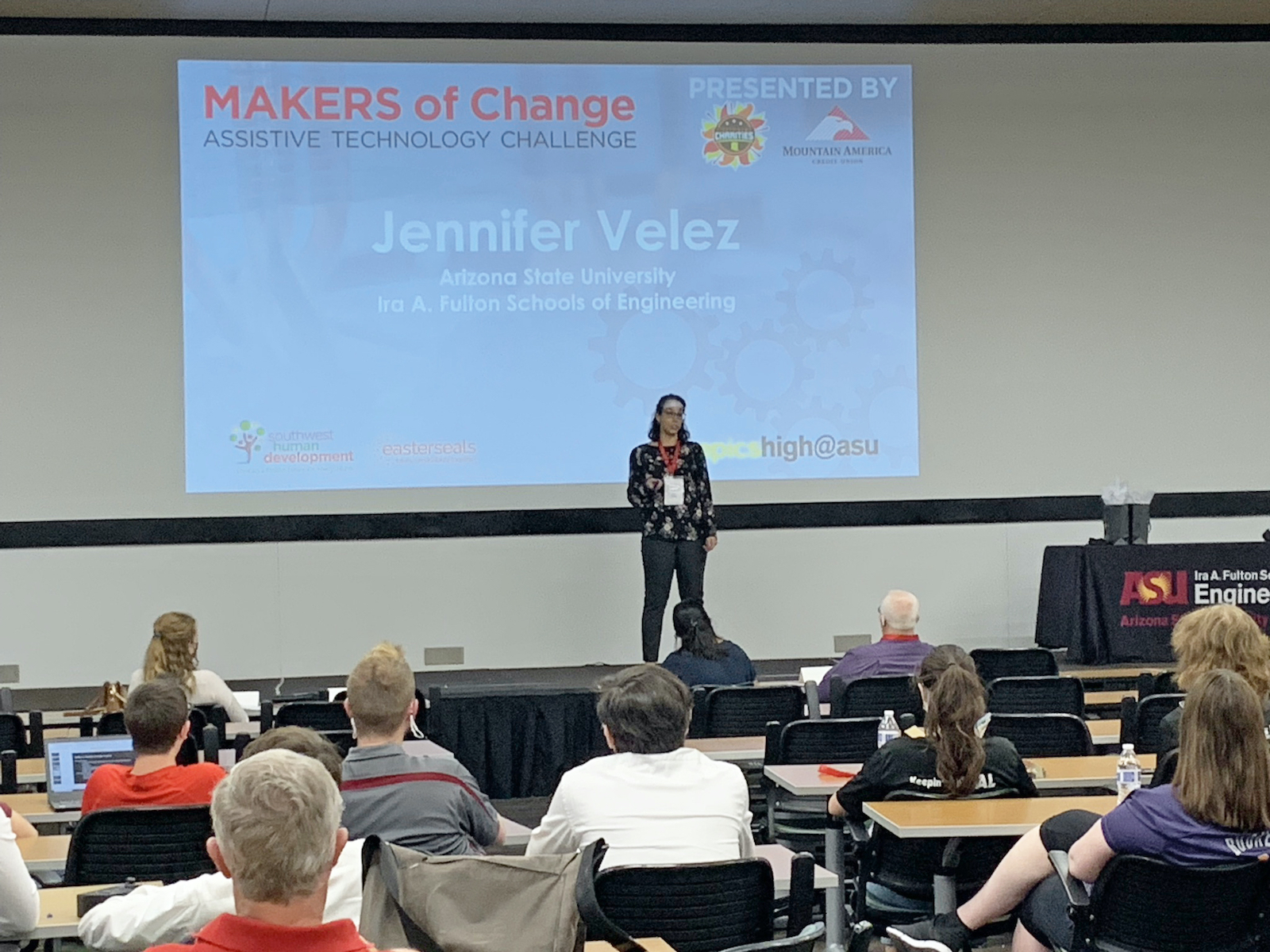
Senior coordinator for the Fulton Schools Outreach and Recruitment program Jennifer Velez (on stage) speaks to guests attending the final judging round of the Makers challenge, which drew more than 400 students from a dozen Phoenix-area high schools and the ASU EPICS High program. Photo courtesy of Southwest Human Development
Before the EPICS High collaboration, the Fulton Schools was already aiding the MAKERS challenge’s progress through contributions from Jennifer Blain Christen, an associate professor of electrical engineering.
Over the past several years, Blain Christen has helped design the challenge scenario, develop judging guidelines for the competition, organize the event and judge students’ projects.
“Each year I’ve come away impressed by what students are able to accomplish in a very short amount of time,” she says.
Blain Christen’s work focuses heavily on ways to more efficiently move technological innovations from the research lab to availability to people who will most benefit from them. She sees the aspirations of EPICS and Southwest Human Development’s programs furthering that same ambition, particularly through organization’s ADAPT Shop, which focuses on designing specialized equipment for children with disabilities.
Tooker Professor Tirupalavanam Ganesh, the Fulton Schools assistant dean of engineering education, who studies, designs and implements learning environments, says the recent MAKERS challenge “offered an especially rich and engaging experience that will motivate these students to strive to create innovative solutions for years to come.”
In a video featuring Johan Andrade, a former student at Bioscience High School in Phoenix who competed in the event and plans to study engineering at ASU, he talks about the value of the challenge in helping young students begin to cultivate an engineering mindset, and how the opportunity to aid real people in need provided strong motivation.
Sydney Schaefer, a Fulton Schools assistant professor of biological and health systems engineering, served as a judge for the MAKERS challenge. She says the program is giving young students important lessons that today are more often being given to college engineering students.
“Rather than designing new technology through the lens of their own assumptions about what other people need to navigate their disabilities, engineering students need to learn to get feedback from the people they are designing for,” Schaefer says. “It’s really important to listen first and design second, and I think that’s what this challenge is teaching.”
The event also provides a good example of the outreach process that engineers need to learn, Schaefer adds.
“This is all about knowing how to effectively bring communities together to produce positive change and progress that improves peoples’ lives,” she says. “It’s exactly the kind of training we need to be giving to our next generations of problem solvers.”

A team of high school students describe the technologies involved in their MAKERS challenge project designed to help people with disabilities. The event provided high school students with an introduction to the concept of human-centered engineering and experience in formulating and articulating their ideas for problem-solving applications of assistive technologies. Photo courtesy of Southwest Human Development


